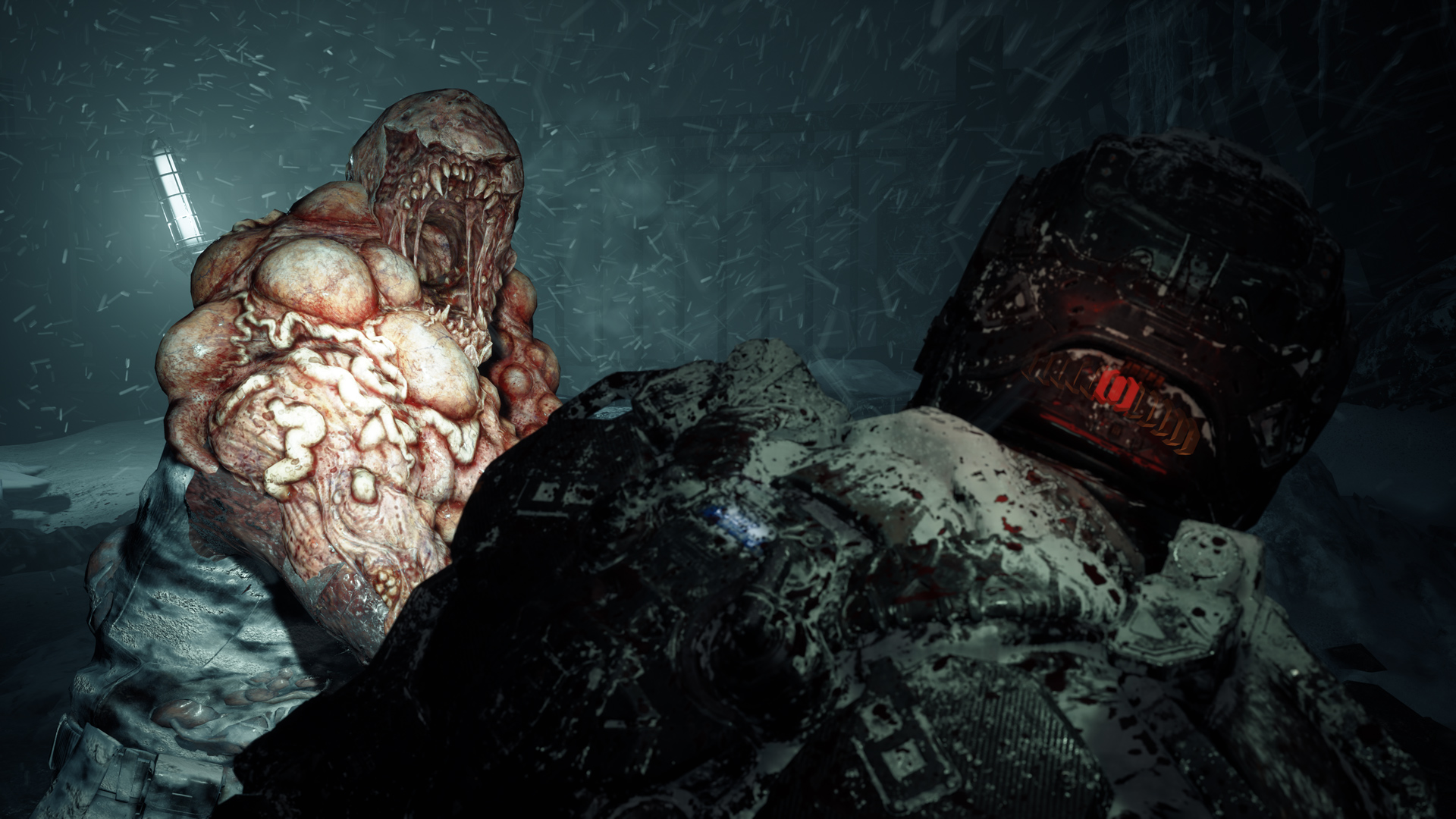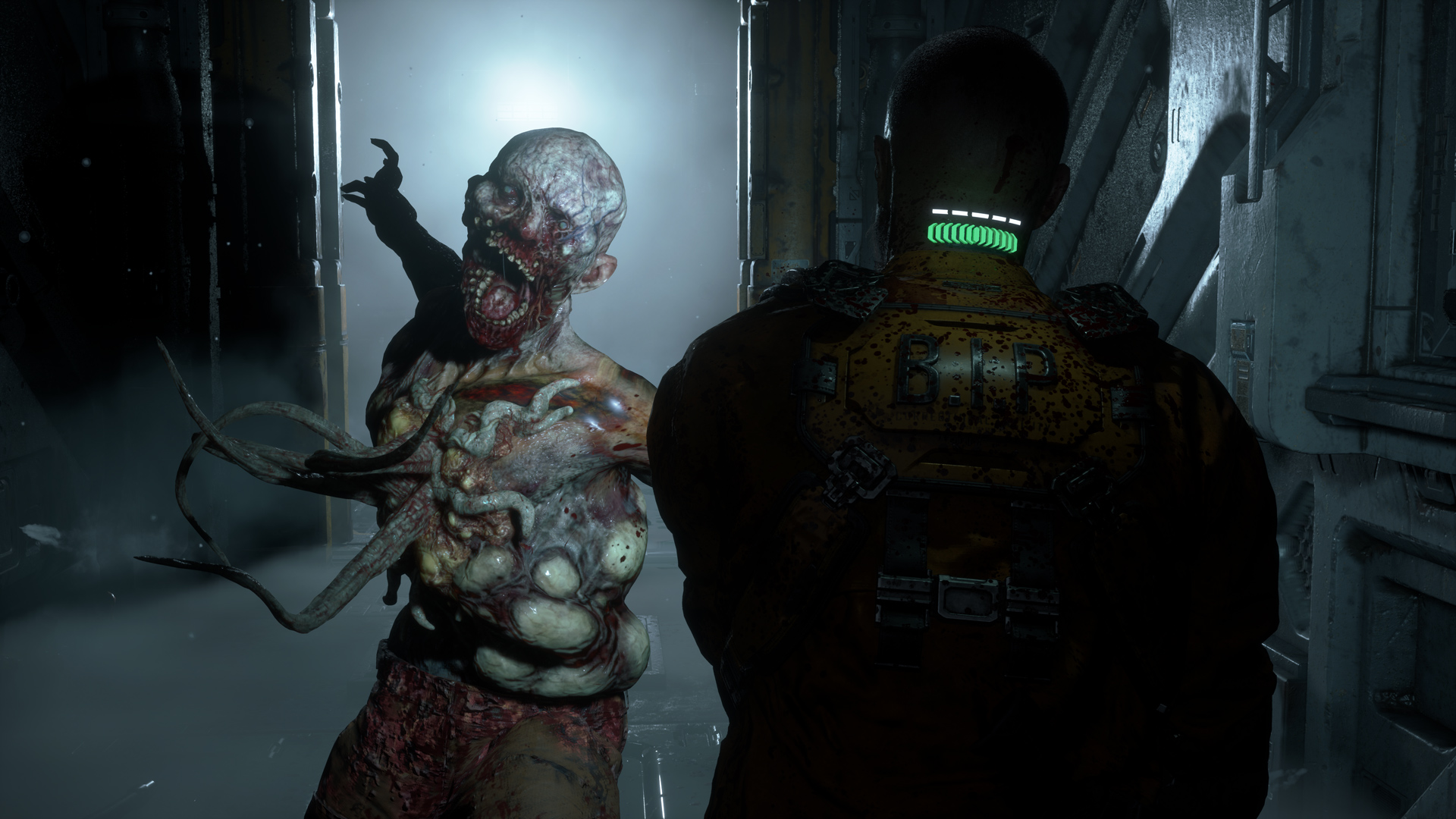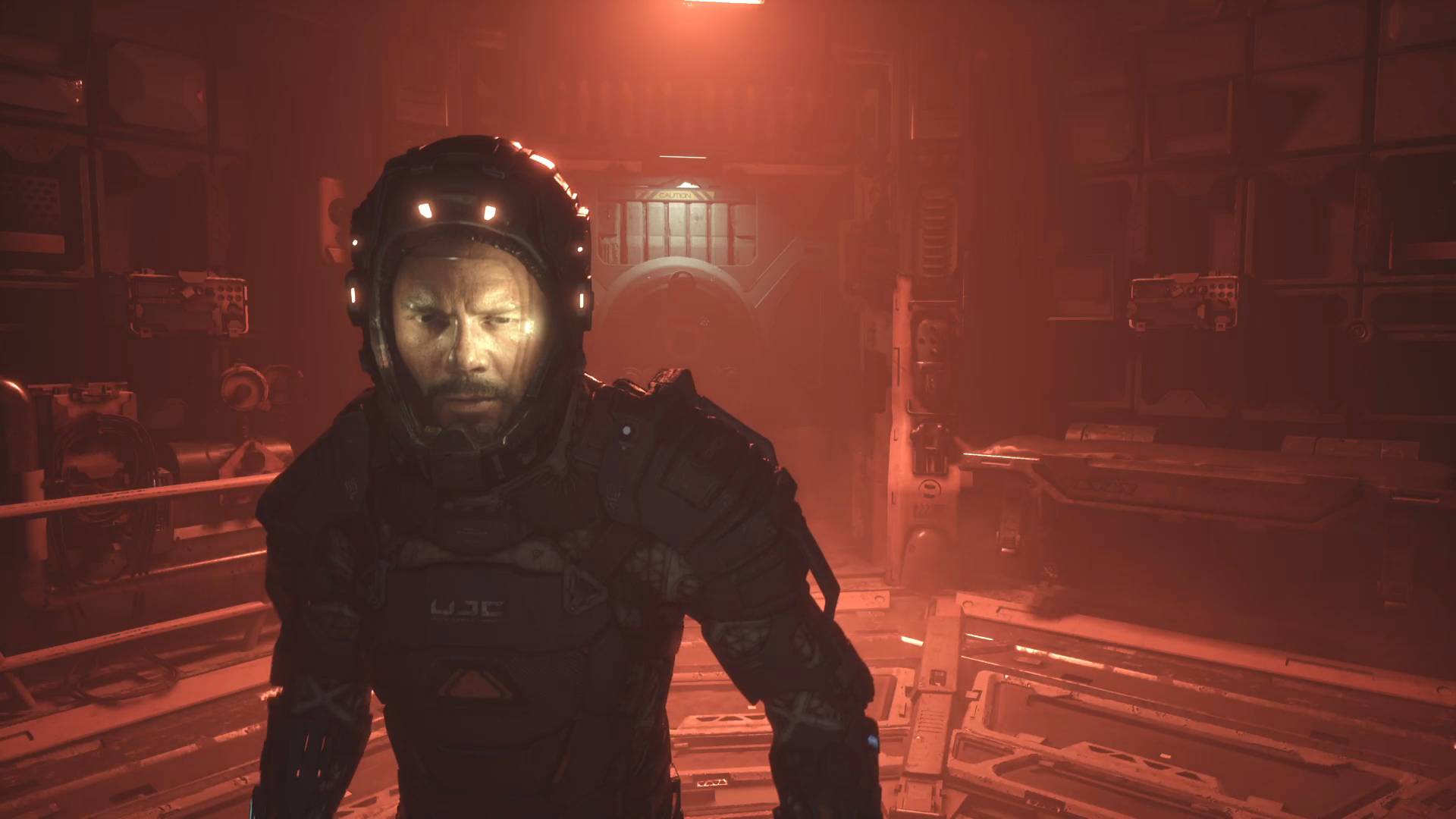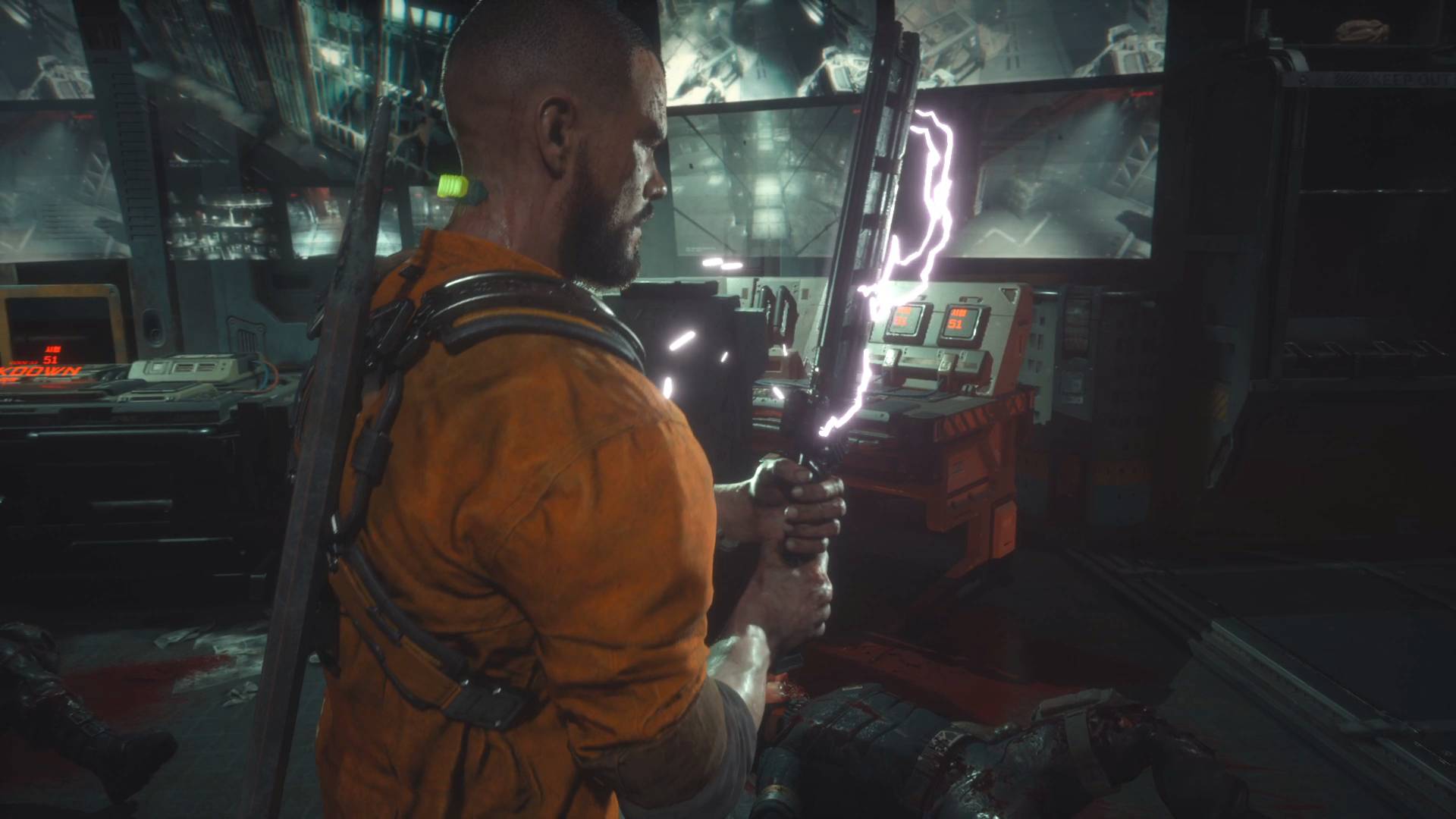The Callisto Protocol is stunning – but how much gore is too much gore?
The Callisto Protocol sets new horror visual standards, for better or worse

The Callisto Protocol is turning my stomach. And not that it matters, but I don't consider myself squeamish. I'm an ex-plumber, and I've found myself in some pretty gruesome situations. I've had my hand down a choked toilet pan more times than I care to recall, elbow-deep in number 2. I've fished dead pigeons from an attic tank after the tenant of a rental property complained their water supply tasted funny when brushing their teeth. I've discovered a rat's nest in the choked grease trap of a fish and chip shop's clogged sewer drain. And I once happened upon a poor old woman's corpse weeks after she'd passed away in her sleep when I was called out to a flooded house.
With all of that, it takes a lot to turn my stomach – even if The Callisto Protocol's liberal use of gratuitous gore is taking a pretty good run at it. In fact, so much of Striking Distance Studio's sci-fi action brawler is rooted in graphic death sequences and dismemberment, that it's actually left me asking the question: How much gore is too much gore?
Looking good


9 Callisto Protocol tips to keep you alive a little bit longer
In broader terms, this question extends to another earnest query I've seen popping up online more and more in recent years: How realistic do we really want (or need) video games to be? I grew up in the '90s, and the first video game I remember playing was DMA Design's puzzle platformer Lemmings on my dad's Atari ST. By the time I'd graduated to Sonic the Hedgehog on the Sega Mega Drive/Genesis later that year, I couldn't believe how realistic it looked in comparison. Fast forward a few years and I marveled at FIFA '96 in 3D (a first for the series at the time), and was totally wowed by the physics of Lara Croft's swinging ponytail in Tomb Raider 2 – a superficial addition absent from its forerunner. Half-Life 2 took realism in games to another level in 2004, with everything from Grand Theft Auto 4 (2008) to Metal Gear Solid 5 (2015), Red Dead Redemption 2 (2018), and The Last of Us Part 2 (2020) nudging the fidelity bar higher each time.
To this end, The Callisto Protocol looks gorgeous, and I love horror games that push the boundaries of what's considered acceptable in this space. The genre lends itself so naturally to death and decay, so when you drop a violent jailbreaking protagonist into a space jail that's become overrun with maniacal zombies, you expect things to get ugly. And in Black Iron Prison they really do. Pretty much from the get-go, you're either beating humanoids to death with a metal pole or an electrified shock stick, or getting your head ripped from your shoulders by infected inmates. In order to survive, severing the limbs of your pursuers helps, as does impaling them on spike walls or throwing them into active industrial fans by virtue of your anti-gravity gun.
To quote our Callisto Protocol review, though, Striking Distance's debut outing is "an impressive game derailed by unforgiving combat". In practice, this saw me dropping down the game's difficulty to the easiest setting in order to have fun – because playing on anything higher saw me die time and time again, especially whenever I came up against more than one enemy at a time. Game journos can't play games, I hear you, but as someone who's happily sunk over 250 hours into Elden Ring and who's second home is the Soulsborne series, The Callisto Protocol, for me, isn't challenging but cruel in its approach to difficulty. At times I've felt like the game is forcing death upon me, and thus making me sit through its gruesome death sequences – wherein I might have my jaw ripped from my face, my eyeballs forced into my skull, my neck snapped 360 degrees, or my head stomped into the concrete floor.
Scaredy cat

"I'm not sure where we go from here, but I'm also not sure how much more realistic we want, or need, these interpretations of graphic violence to get."
Is The Callisto Protocol's zealous penchant for gore, then, compensating for falling short in other areas? Possibly, but in its defense, it's unwavering and unapologetic in its delivery. I think I'm about halfway through its story so far, and it is positively ghastly at every turn. It's kept me on edge, and, truthfully, it's made me wince and look away from my screen more than once – a response no other video game that I can think of has elicited in me. Games like Manhunt and even Dead Space were just as violent way back when (Striking Distance Studios, of course, being headed by Dead Space mastermind Glen Schofield), but The Callisto Protocol shows what's possible in slasher film-esque gaming on the most current and powerful hardware.
I'm not sure where we go from here, but I'm also not sure how much more realistic we want, or need, these interpretations of graphic violence to get. For some players, everything I've noted above will be viewed as a glowing testimonial for The Callisto Protocol, while for others, I'm sure, it'll be enough to put them off. Everyone has different tolerance levels, and with each passing console generation, we set new standards and expectations with realism in mind. Against today's standards, it's hard to believe cinema goers fainted in the aisles while watching supernatural horror film The Exorcist in 1973, as was reported at the time – and it's not like old school survival horror didn't scare me shitless in the late '90s and early 2000s.
Sign up to the GamesRadar+ Newsletter
Weekly digests, tales from the communities you love, and more
Perhaps I'm simply bemoaning the amount of gore in the case of The Callisto Protocol because I'm not getting on well with its combat – something that, given how pretty it is, otherwise feels like a missed opportunity. If its combat was more fluid, maybe its gore wouldn't jar with me so much. How much gore is too much gore, then? That depends on the player, but I think I'm getting close to having my fill.
The best horror games will send you cowering behind the couch

Joe Donnelly is a sports editor from Glasgow and former features editor at GamesRadar+. A mental health advocate, Joe has written about video games and mental health for The Guardian, New Statesman, VICE, PC Gamer and many more, and believes the interactive nature of video games makes them uniquely placed to educate and inform. His book Checkpoint considers the complex intersections of video games and mental health, and was shortlisted for Scotland's National Book of the Year for non-fiction in 2021. As familiar with the streets of Los Santos as he is the west of Scotland, Joe can often be found living his best and worst lives in GTA Online and its PC role-playing scene.


